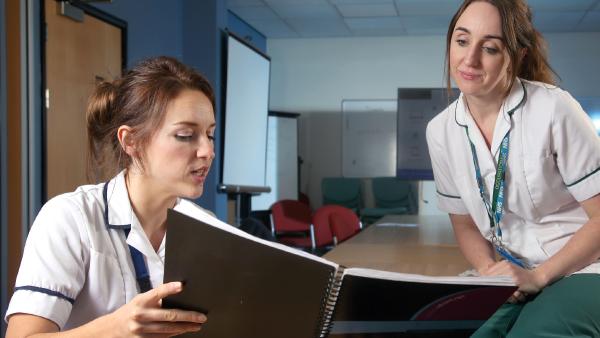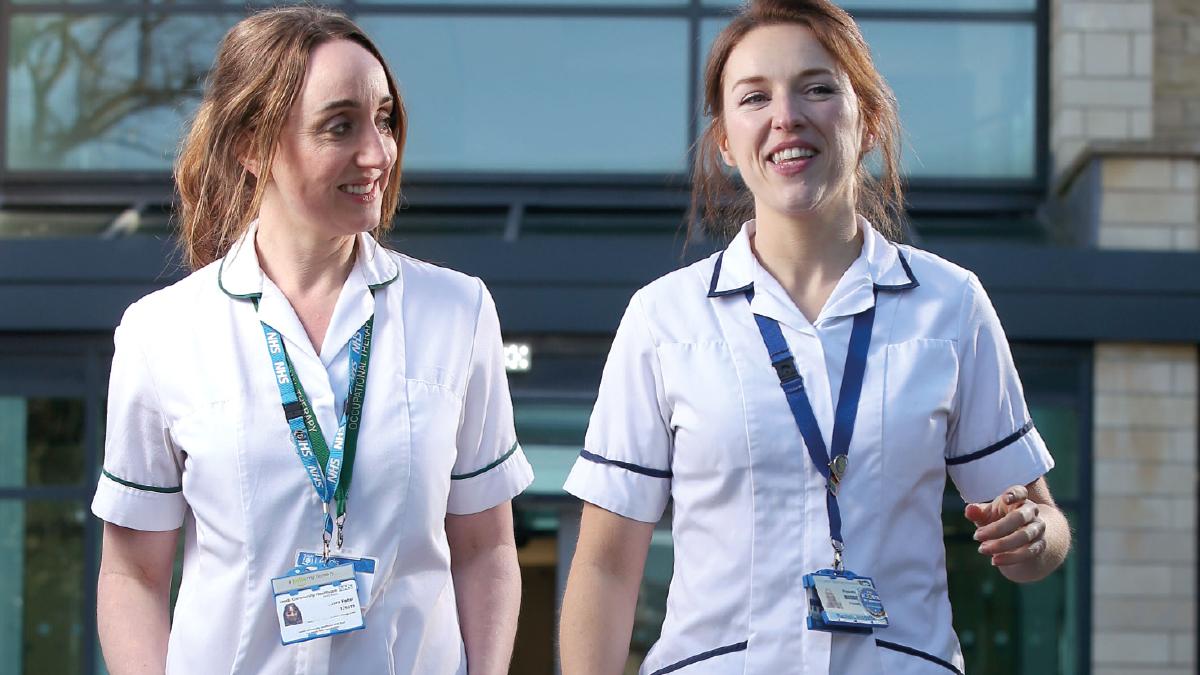The NHS in England has new guidelines for rehabilitation, reablement and recovery, Hattie Hodgson-Crome explores what this means in practice
You may well have heard of the intermediate care framework (ICF) and the new model for community rehab. But do you know what these mean for your service, your work or your patients? The CSP and the Royal College of Occupational Therapists have joined together to demystify these documents and explain how you can seize the opportunity they present.
Intermediate care framework: an introduction
The intermediate care framework for rehabilitation, reablement and recovery following hospital discharge was issued by NHS England in September 2023. Alongside this, a new model for community rehabilitation and reablement was published. Together, these documents represent a landmark moment for rehabilitation in the NHS in England.
The ICF and new model for community rehabilitation aim to make community rehabilitation a key part of NHS planning and service delivery. They are an acknowledgement from the top of the service in England that rehabilitation must be taken seriously and delivered comprehensively to improve the health of patients and populations.
We are seeing the benefits of getting therapy intervention to people much sooner. For example, an OT visiting a person in the days after they have been discharged from an acute setting is able to provide equipment quickly and advise on strategies to increase independence and reduce risks.
This is a product of years of influencing activity from the Community Rehabilitation Alliance, which the CSP convenes and co-chairs, to ensure that rehab is given national recognition throughout NHS England.
Four priorities
The ICF and new model for community rehabilitation are intended for integrated care board leaders, but they present an opportunity for many allied health professionals (AHPs) in England. They emphasise the importance of AHP leadership at system level to lead on their implementation.
The ICF highlights four priority areas of focus, outlining recommended actions to be taken between now and March 2025:
- Improve demand and capacity planning.
- Improve workforce utilisation through a new community rehabilitation and reablement model.
- Implement effective care transfer hubs.
- Improve data quality and prepare for a national standard.
Learning from the frontrunners – Leeds HomeFirst active recovery service
Leeds HomeFirst is a programme of the Leeds Health and Care Partnership, made up of health and care organisations from across Leeds and is part of the wider West Yorkshire integrated care system (ICS).
The group is one of eight sites across the country which has been trialling new approaches for people to access high quality step-down, intermediate care. They have seen significant benefits from their new active recovery offer, which sees professionals from health and social care working closely together.
Laura Falter, clinical lead and occupational therapist, and Rachel Livingston, service development lead and physiotherapist, have played a key part in the development of the active recovery service. They are both employed by Leeds Community Healthcare NHS Trust.
Rachel explains: ‘The active recovery service is a key part of the Leeds HomeFirst offer to patients. It brings together clinical staff, mostly OTs and physios, employed by Leeds Community Healthcare Trust, and reablement workers employed by the local authority – supported by a wider MDT.’
Before the active recovery pilot, on discharge from hospital a person would be referred to the local authority reablement and NHS therapy teams separately. Now the reablement worker and the therapist visit people together as a first point of contact.
The service is in a pilot phase, which has been running since the summer.
For everyone discharged so far during the pilot, this equates to 125 fewer domiciliary care hours per week of support being provided due to greater patient independence
Laura adds: ‘We are seeing the benefits of getting therapy intervention to people much sooner. For example, an OT visiting a person in the days after they have been discharged from an acute setting is able to provide equipment quickly and advise on strategies to increase independence and reduce risks. This maximises rehab outcomes and decreases the risk of people deteriorating.’
Rachel said: ‘We can work with people to establish what goals are important to them, to engage in some “blue sky thinking” and work out what individuals want to achieve from their rehabilitation post-hospital admission. We can offer truly patient-centred care.’
The team delivering the service have a virtual huddle every day, which helps them plan where to direct resources. They also have a wider MDT meeting once a week.
Rachel says: ‘The barriers which historically might have been there owing to lack of communication between teams no longer exist. Through our MDT we can access resources from the community trust and the local authority, including from pharmacy technicians. We can get people the help they need so much faster and can pool our knowledge to connect people with wider community resources including the third sector.
‘Working alongside therapists gives reablement workers confidence to encourage people to engage in more rehabilitation activity. Equally, the physiotherapy and OT staff have learned from the reablement workers. Staff feel much more valued and supported.’
As with all new ways of working, the active recovery pilot hasn’t been without challenges. Laura explains: ‘At the moment, the therapy team and the reablement team each perform their own separate assessment when visiting people. The health and social care staff also use different computer systems for recording information. This makes things less efficient, and we are looking at ways to overcome it.’
As ever, data plays a crucial role. Rachel explains: ‘It was important to us that we measured the effectiveness of this new approach. We’ve looked at the data from our previous way of working for a year, calculating the best way we could move forward.’
The results are incredibly positive: ‘We have observed a significant reduction in the amount of care support people need after their time being supported by the active recovery service compared to what happened before,’ Laura explains. ‘So far, taking count of everyone who has been discharged from the pilot so far, it equates to 125 less domiciliary care hours a week needed because people are leaving the service more independent.’
Rachel had the following advice for those now looking to implement the ICF and rehab model, saying: ‘Building relationships, and consolidating work that is already happening in the intermediate care arena has been really empowering. We have found it important to remember that we don’t lose the uniqueness of each of our professions. The staff are not interchangeable. Rather, we all bring our own expertise and experiences, respecting and learning from each other, building on what one another can offer.’
A campaigning win for the Community Rehab Alliance
The ICF and new model for community rehab are testament to the work of the CSP, alongside members of the Community Rehabilitation Alliance. They show how we have effectively influenced the system, in order to position rehabilitation at the heart of NHS thinking.
As the membership organisation for physiotherapy, the CSP is committed to leading the movement for rehabilitation and the fact these documents have been published demonstrates our success in this. We know that by working in concert with other charities and professional bodies, such as the Royal College of Occupational Therapists, we’re better able to affect change.
The CRA’s own best practice standards have been a key tool for influencing the direction of the ICF and the new model for rehabilitation. The fact that these standards, co-signed and endorsed by CRA members are reflected so closely in the rehab model are testament to the work of the panel of experts from the alliance who wrote them.
But the work does not stop here. We’re steadfast in our commitment to ensuring everyone’s right to rehabilitation is realised and, to that end, we’re looking forward to continuing to work with the CRA and NHS to realise the ambitions of the ICF and rehab model, ensuring that the pilot services already underway are a success.
The ICF in practice - Lauren Walker, RCOT professional adviser
The publication of the ICF presents an opportunity for occupational therapists and physiotherapists to lead the way in the delivery of intermediate care. It empowers teams to address challenges in the way that services are provided and make changes that benefit not only the people who use their services but the practitioners delivering them as well.
As the frontrunner work in Leeds shows, a key element of improving intermediate care pathways is teams in different settings working more closely together. OTs and physios are involved in all stages of a person’s recovery, from inpatient through to community, local authority and housing services. The ICF gives therapists the opportunity to break down traditional barriers between teams so that interventions are provided more collaboratively and efficiently.
We know that many therapy teams are struggling with workforce shortages. Using the ICF and the accompanying rehabilitation and reablement model can help systems take a more fluid, whole-pathway approach to consider where therapists should be positioned to have the most impact. The model aims to harness the skills of practitioners at all levels of experience and seniority. This includes empowering therapy support workers to deliver rehab interventions and establishing senior therapists as the leaders of multi-disciplinary rehab teams.
We urge all therapists to use the ICF as a tool to elevate the vital work they do to help people recover after a hospital admission.
Find Out More
Number of subscribers: 2

![Laura Falter OT and clinical lead (R) Rachel Livingston physio and service development lead (L) [Photos: Lorne Campbell/Guzelian]](/sites/default/files/styles/unstyled_max_width_1200px/public/media-image/2023-12/52_55%20Jan%202024%20integrated%20care%20feature%201200x675px_01.jpg?itok=lXXe-vSj)


